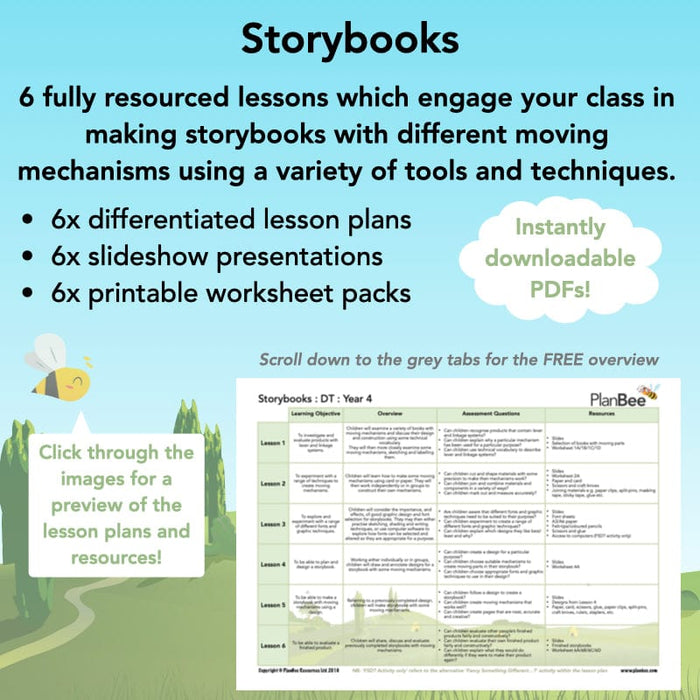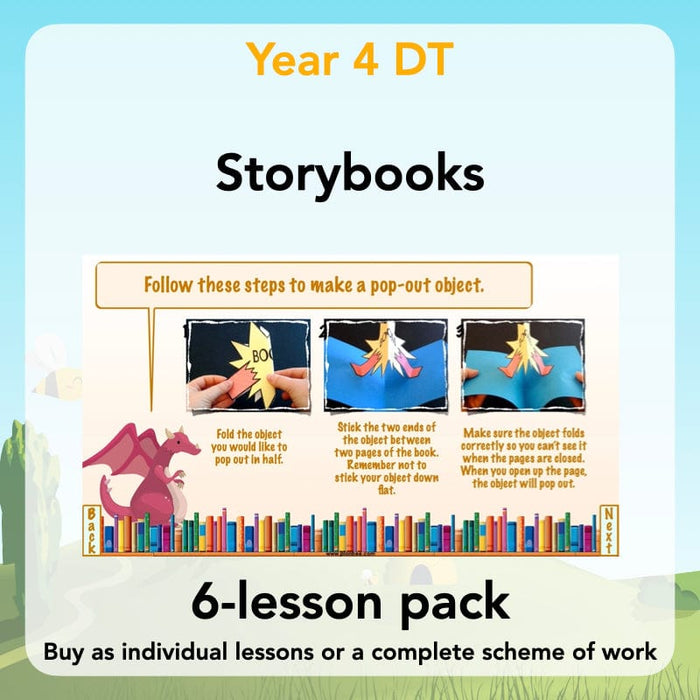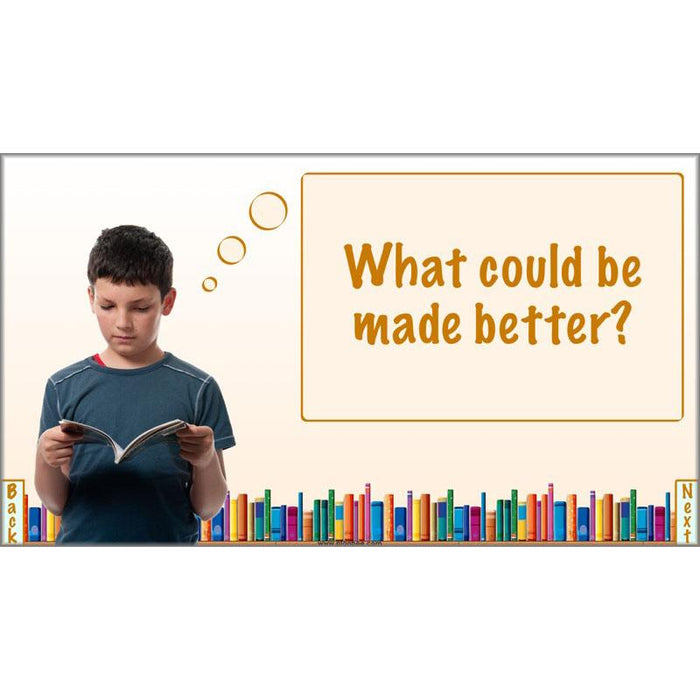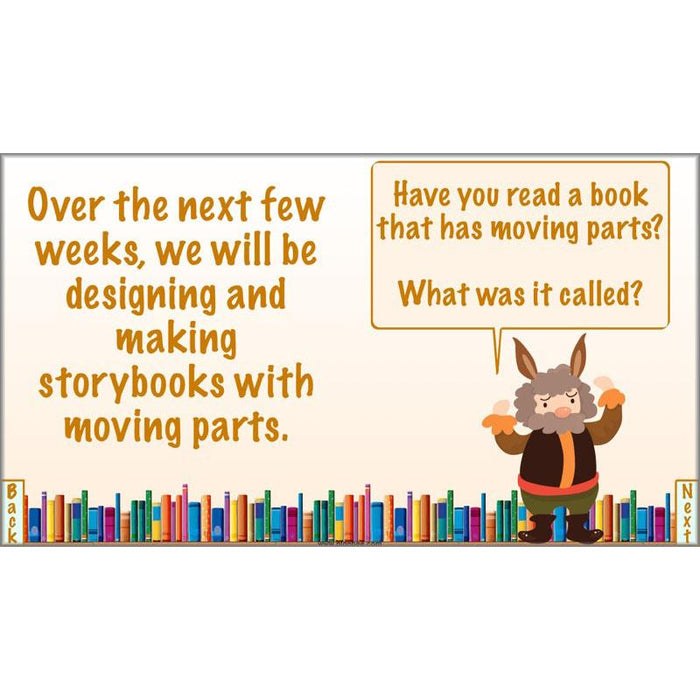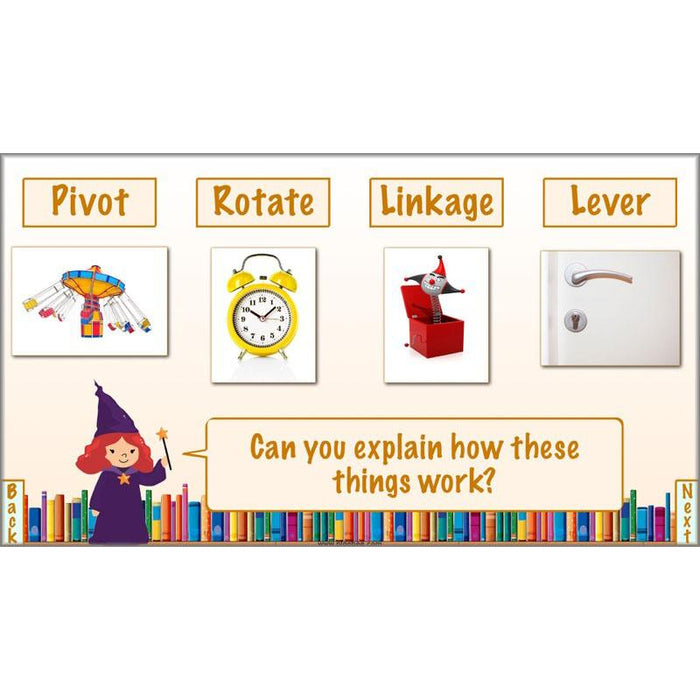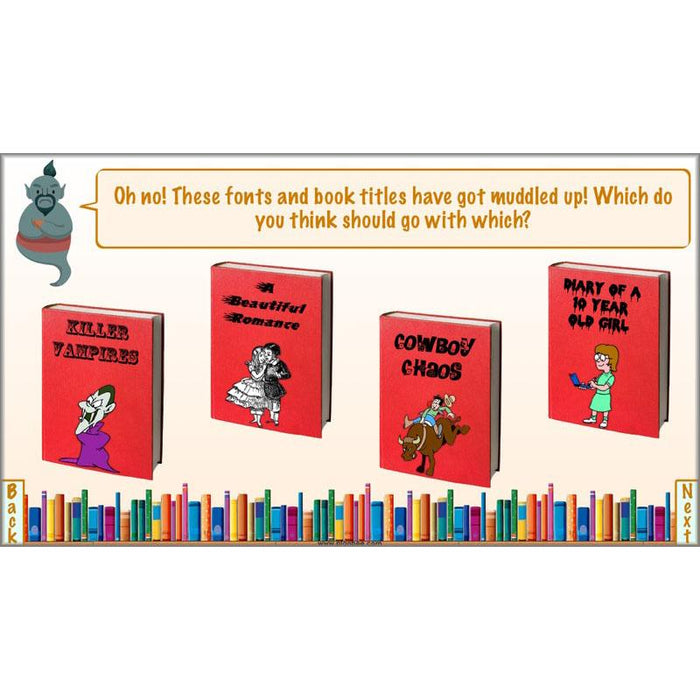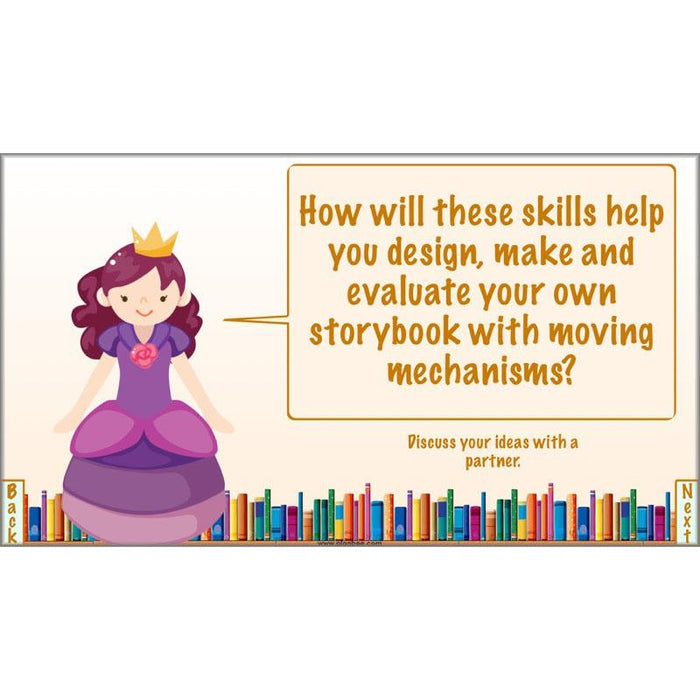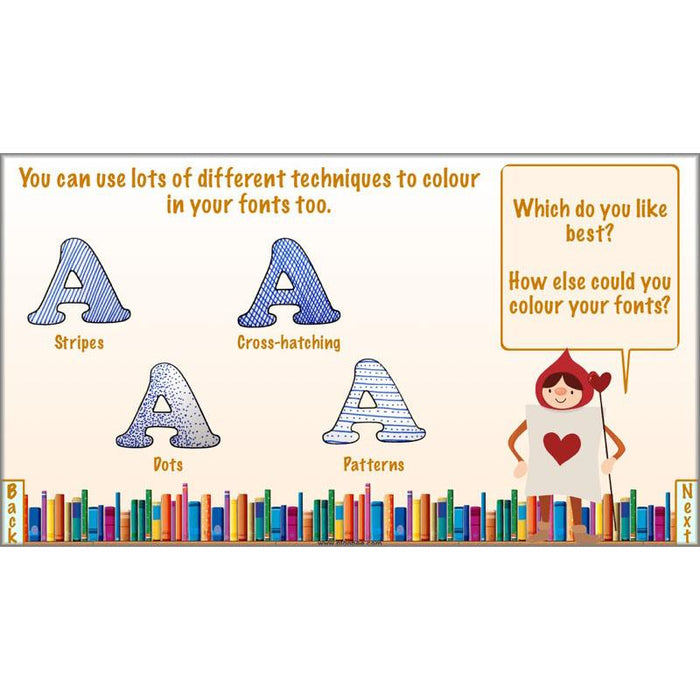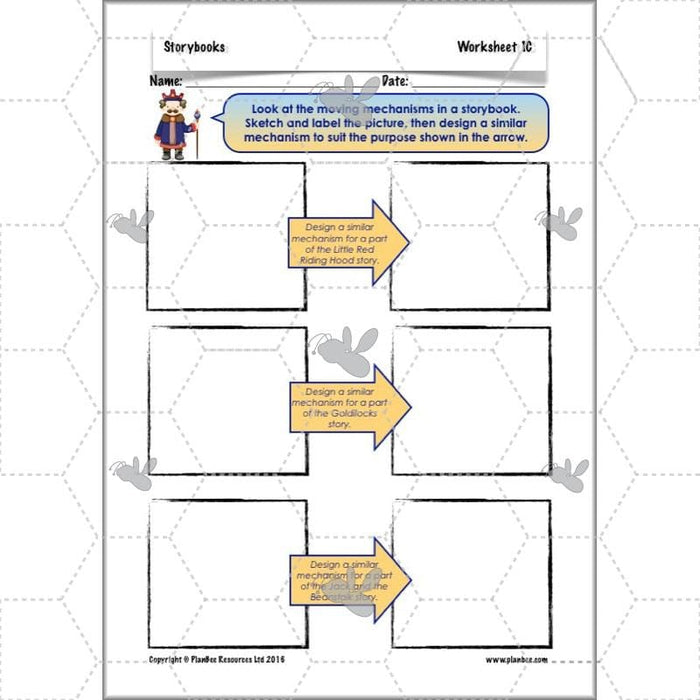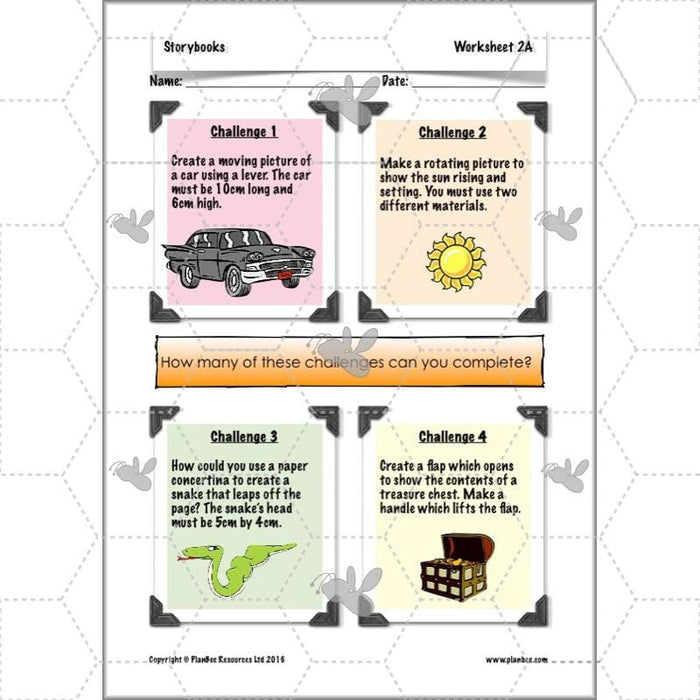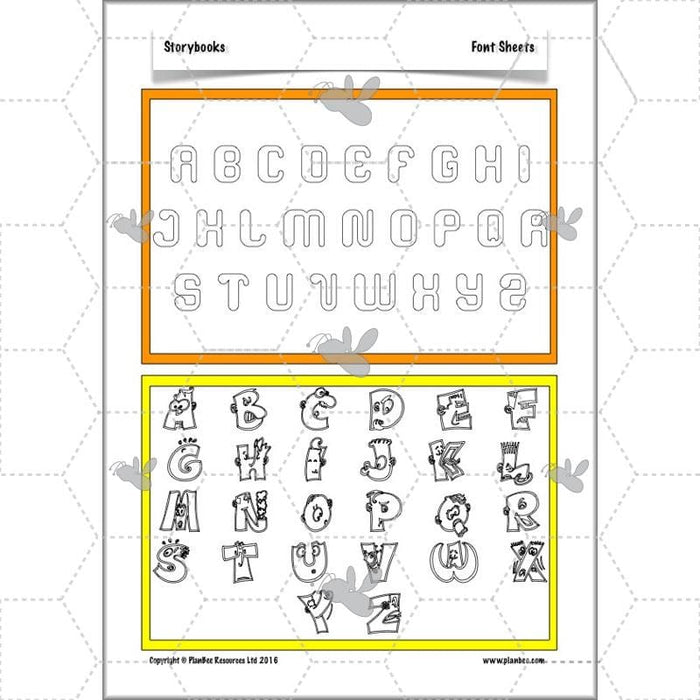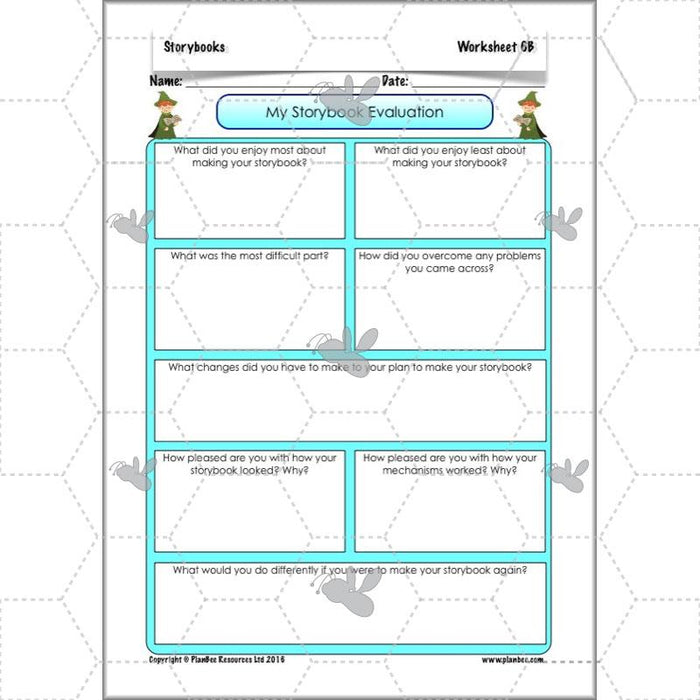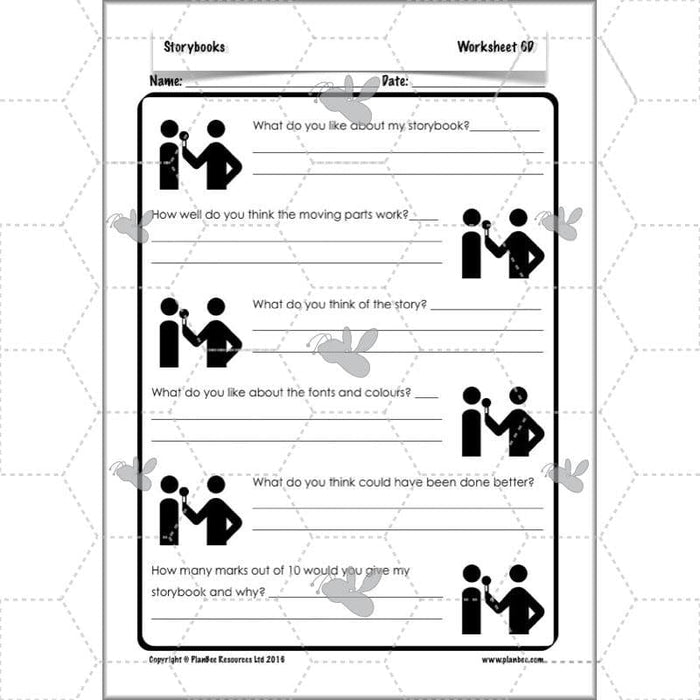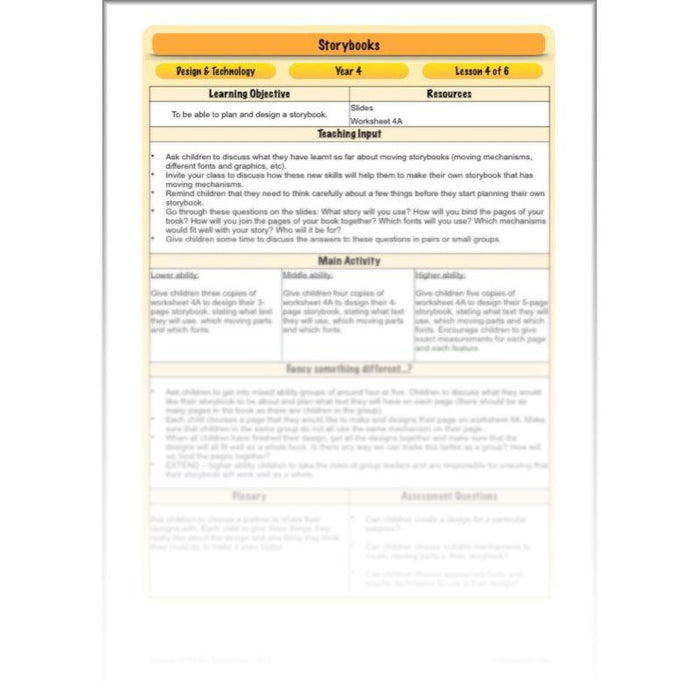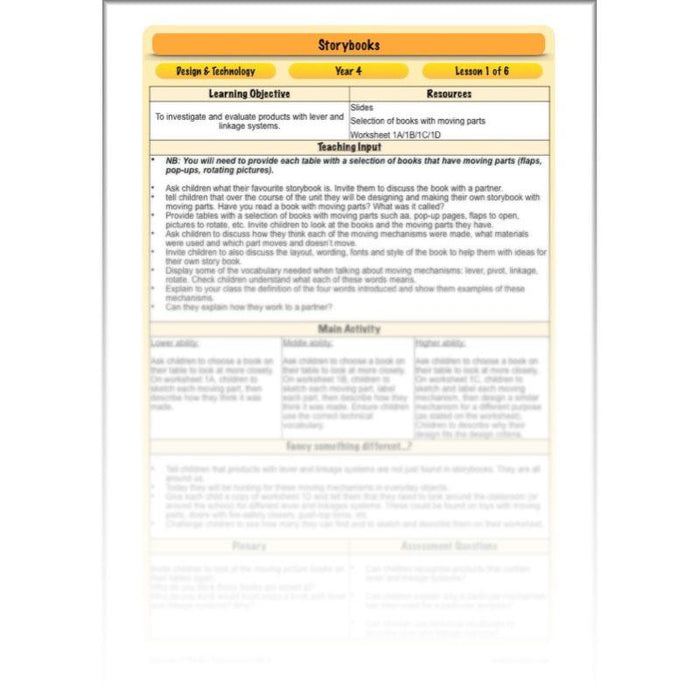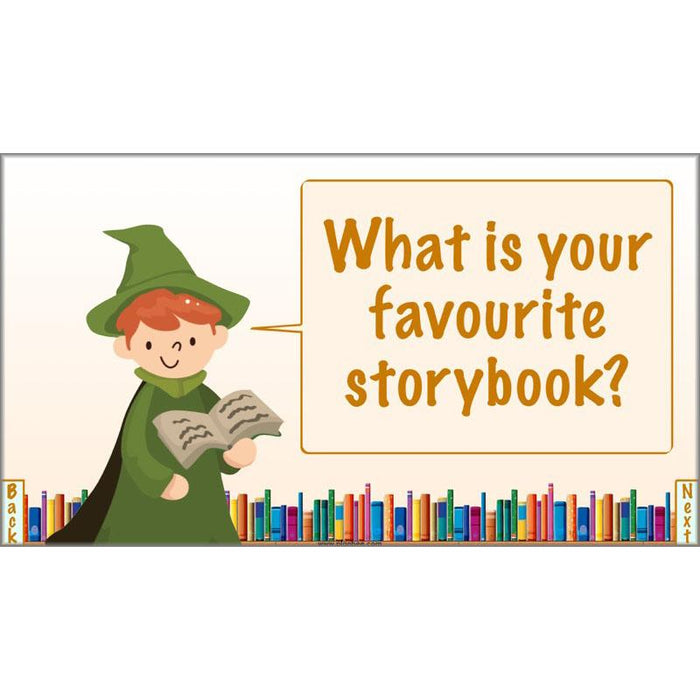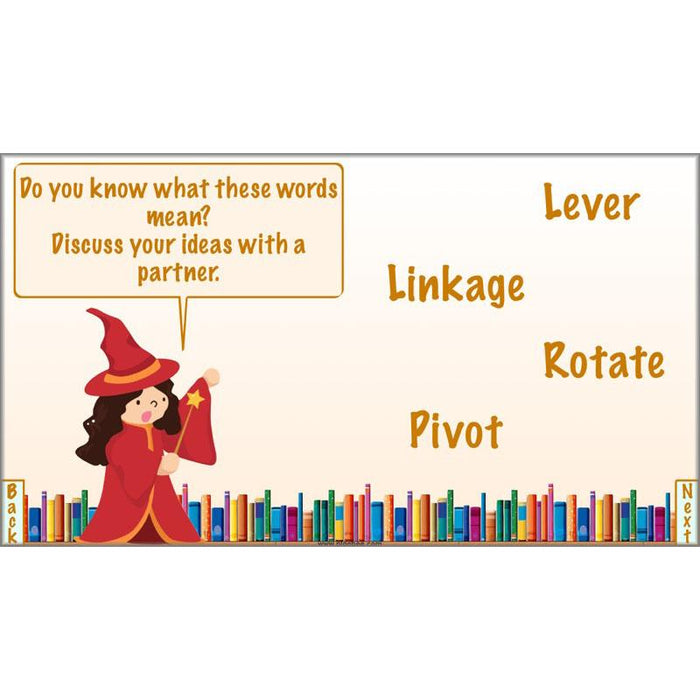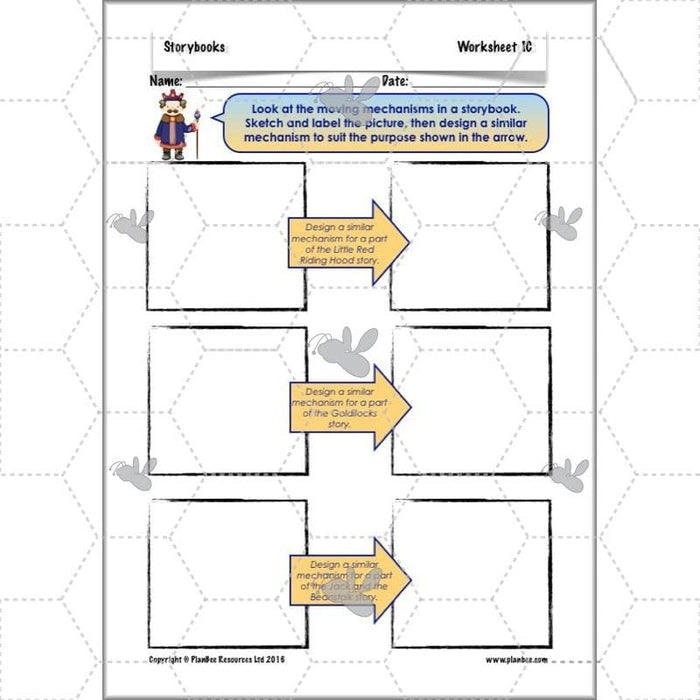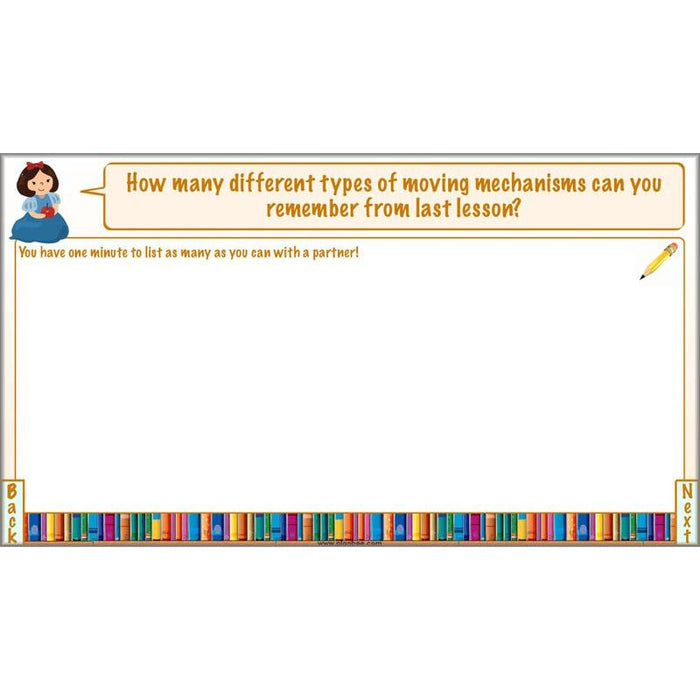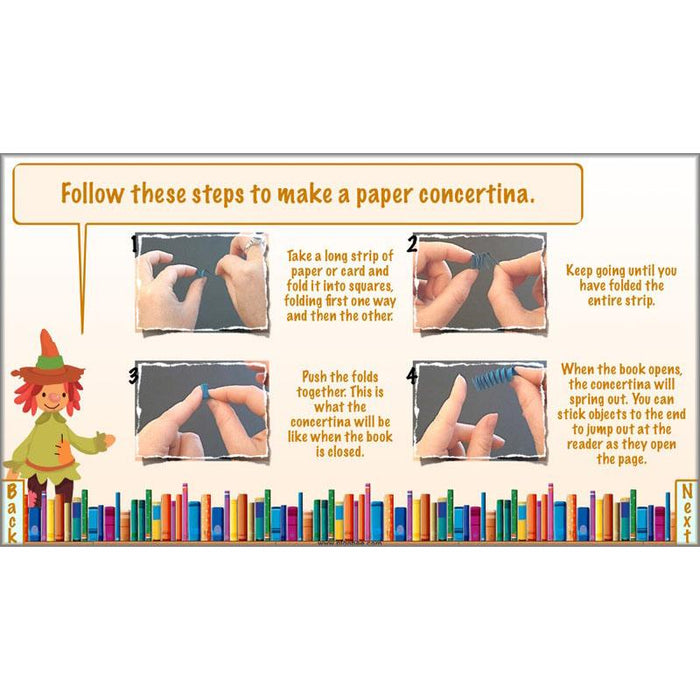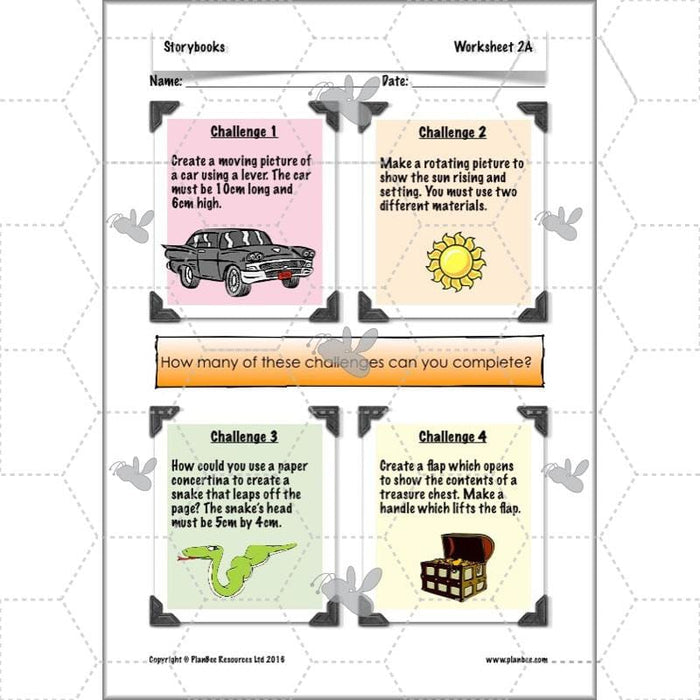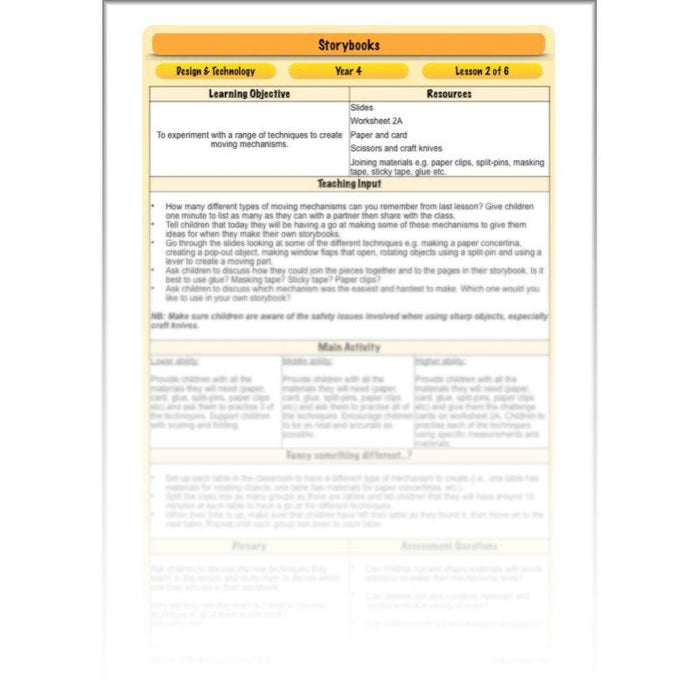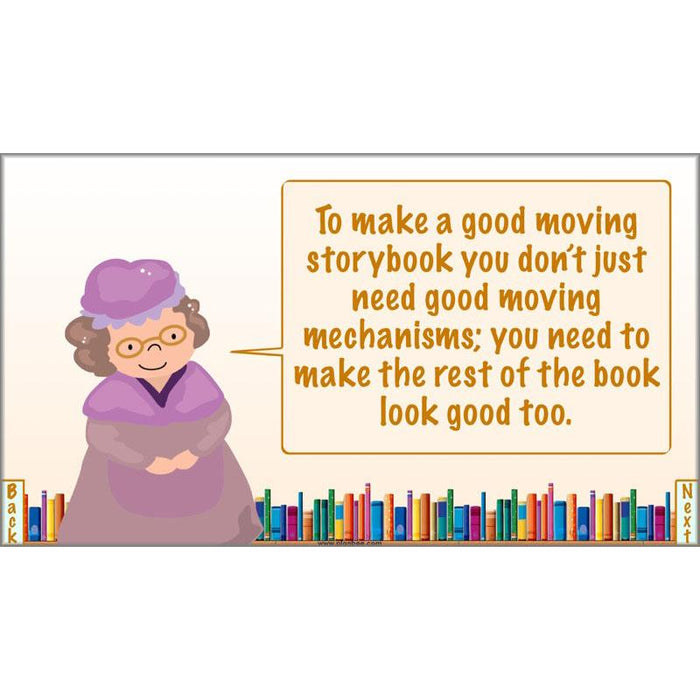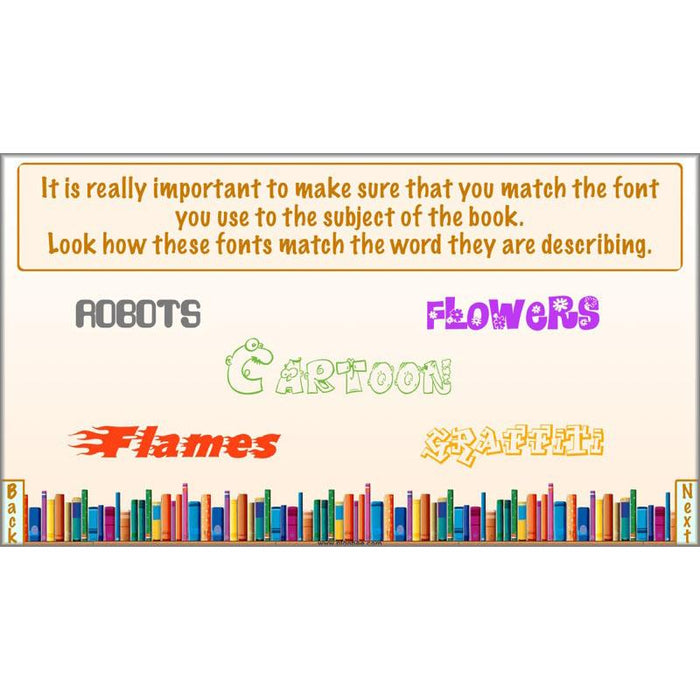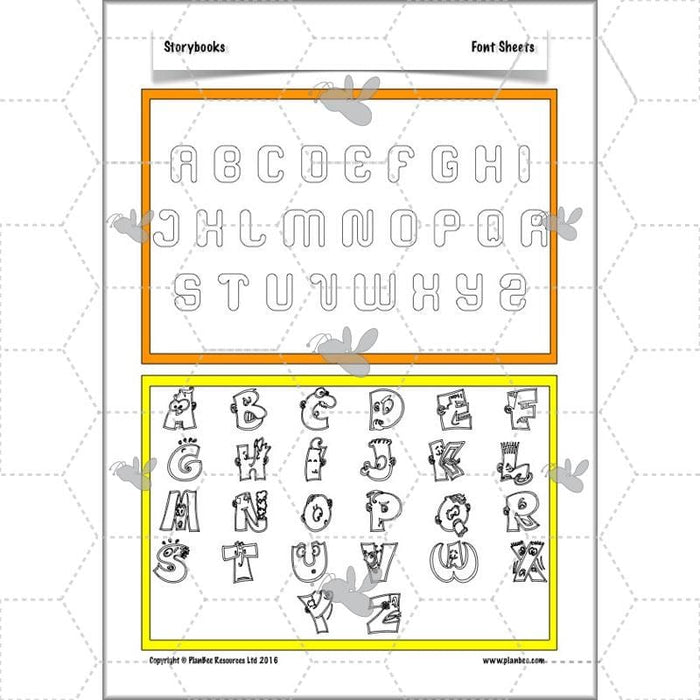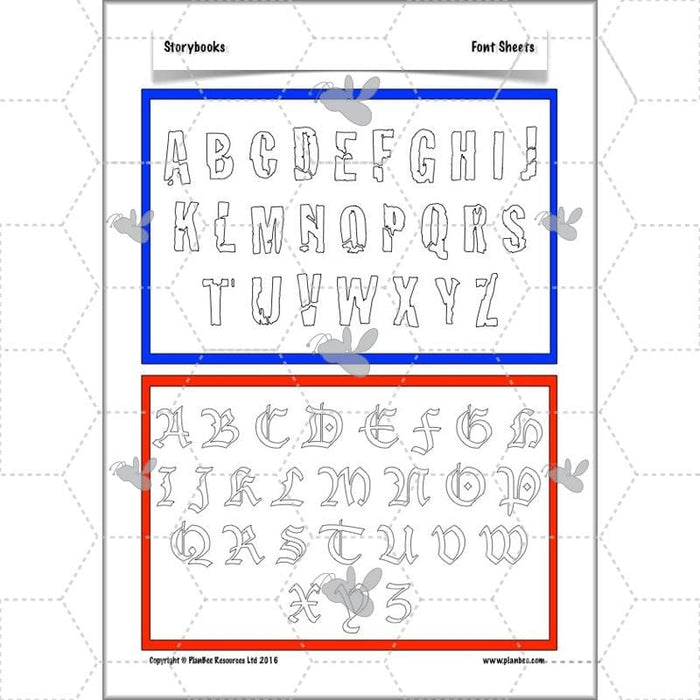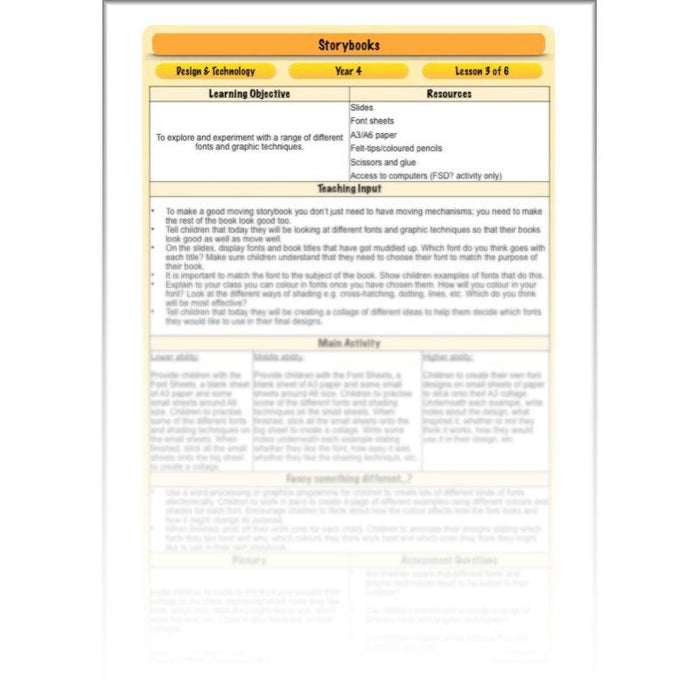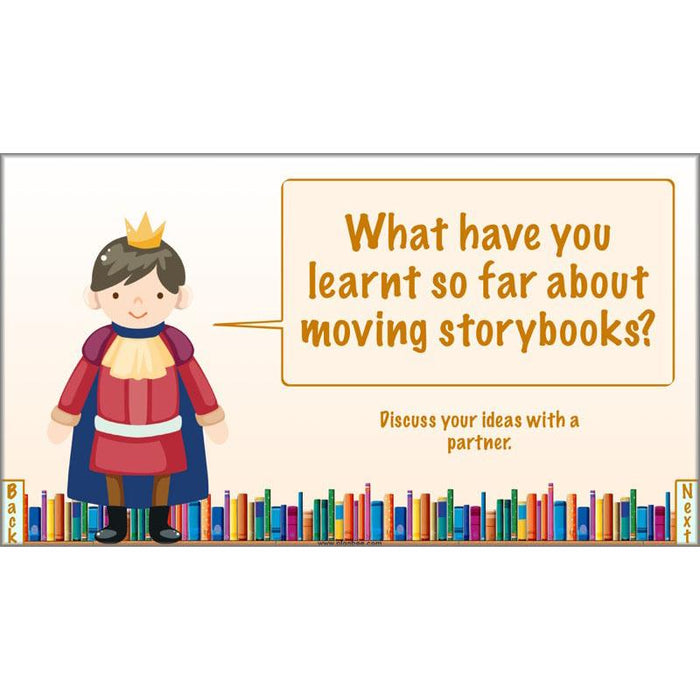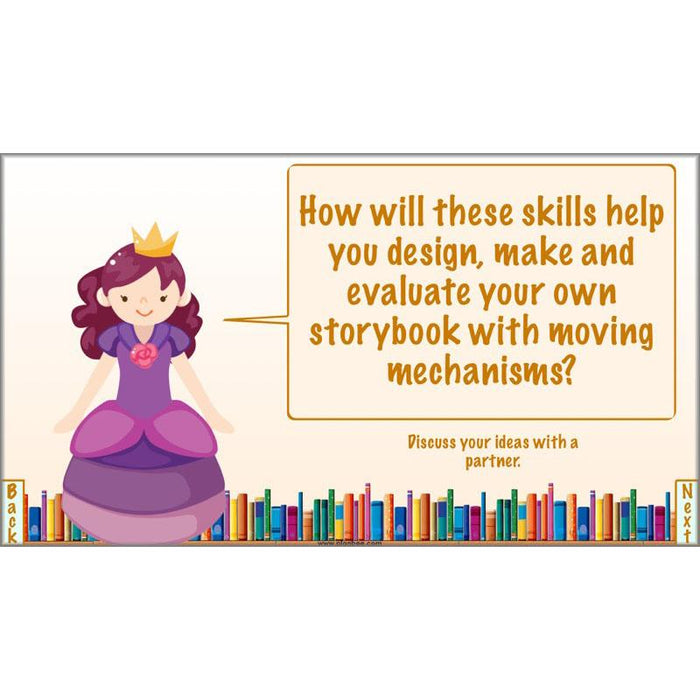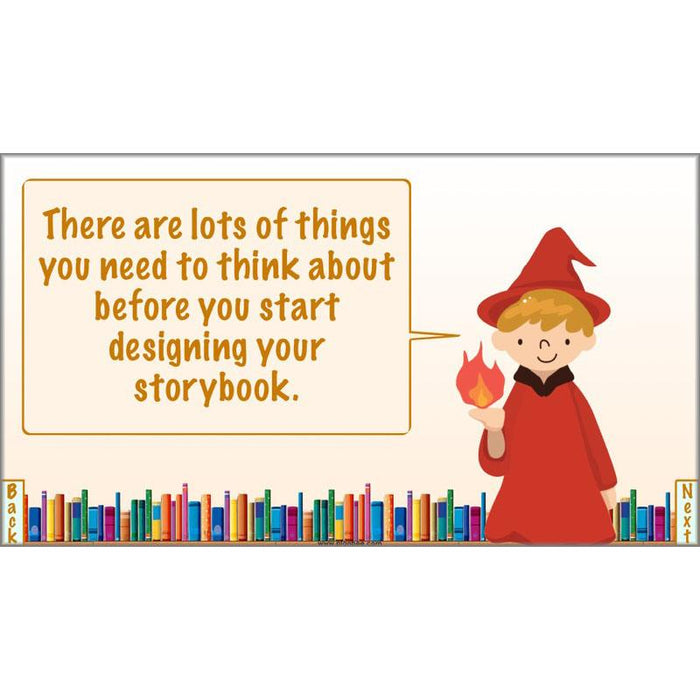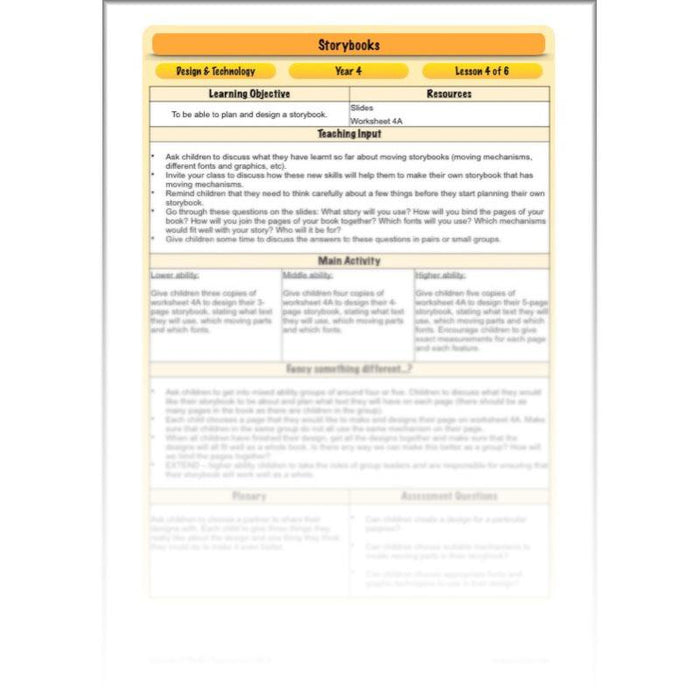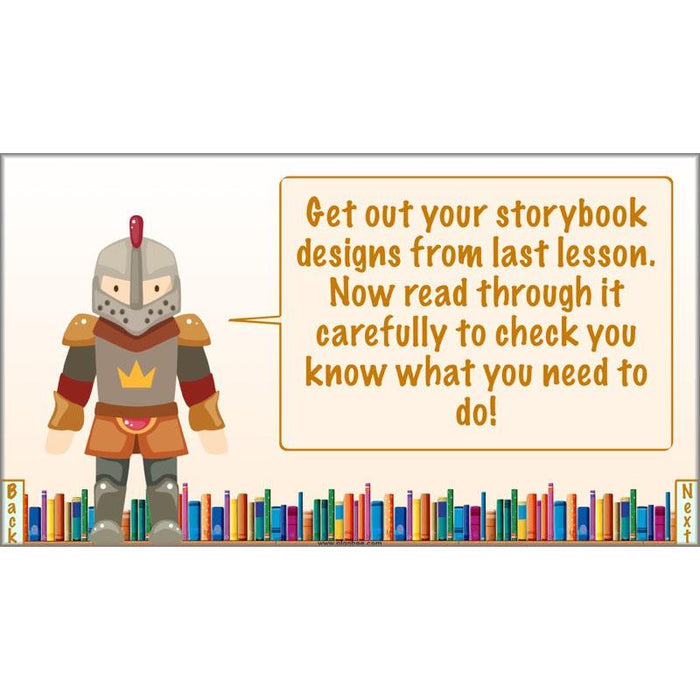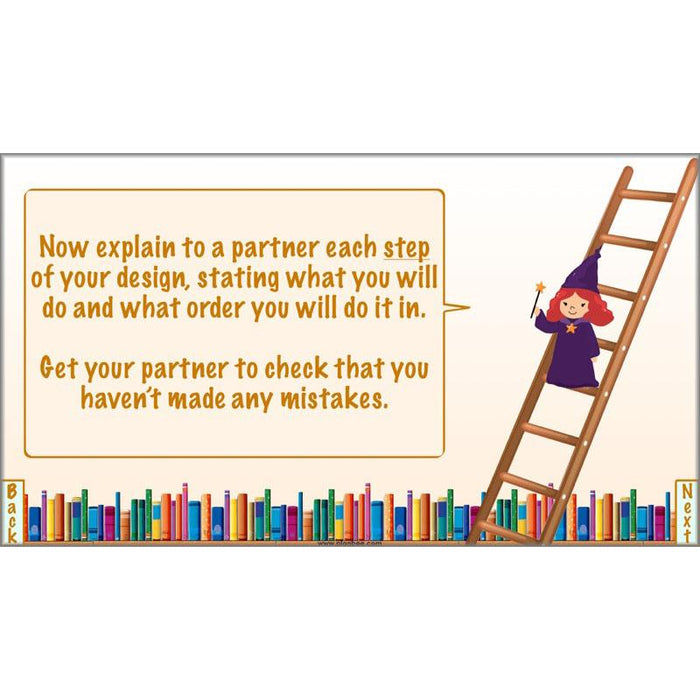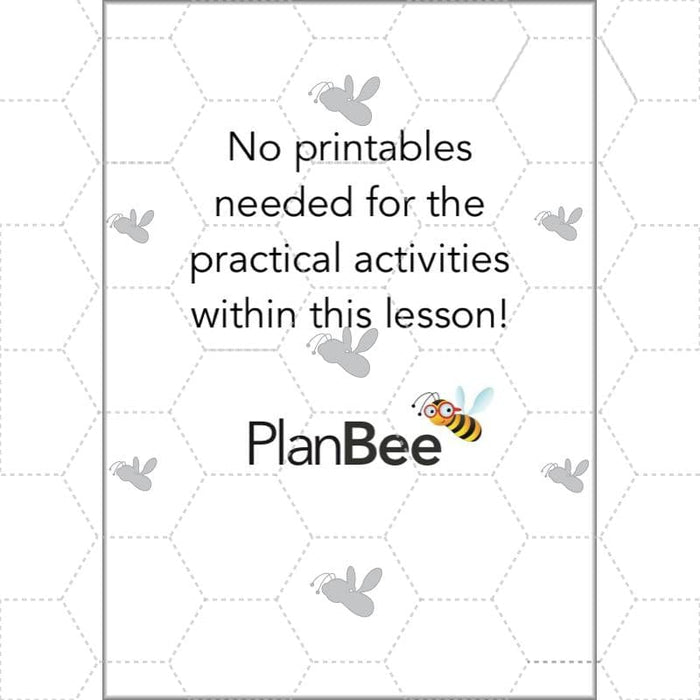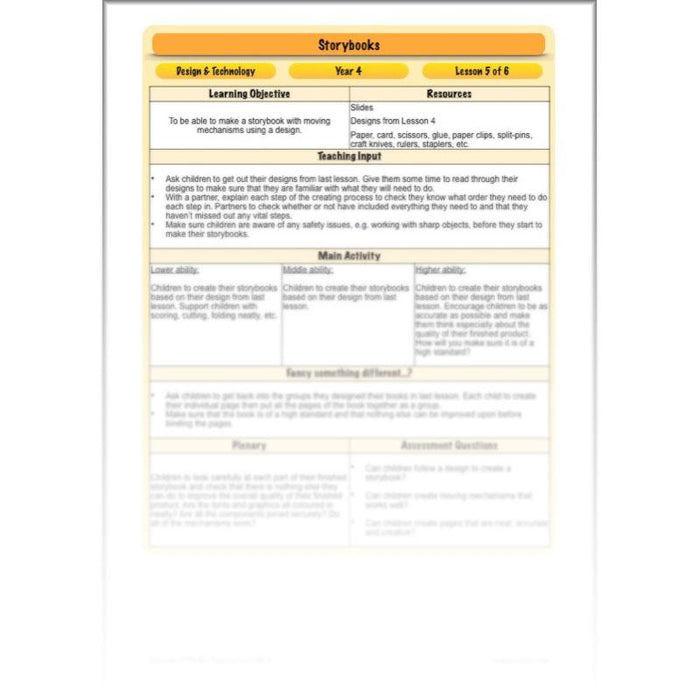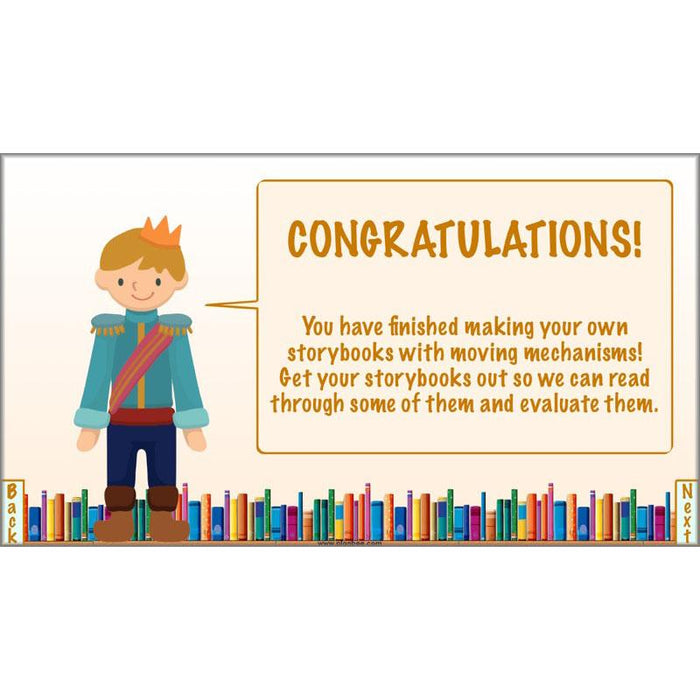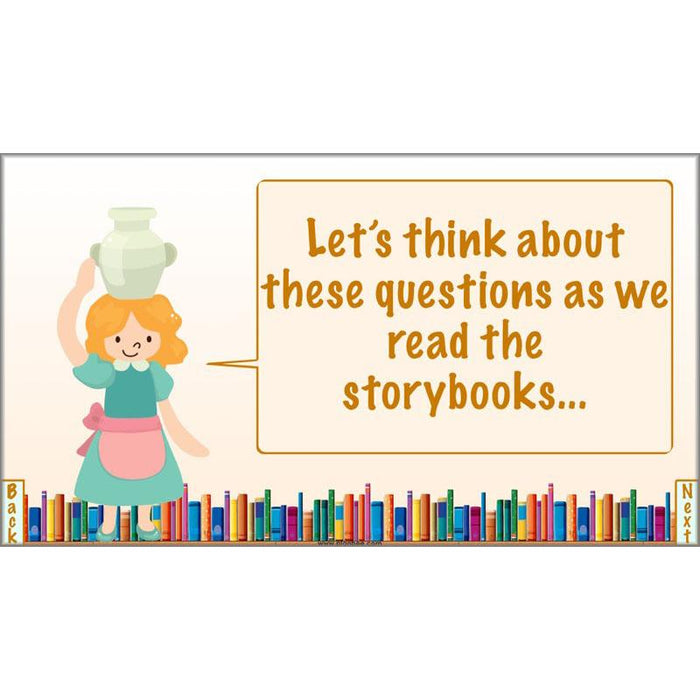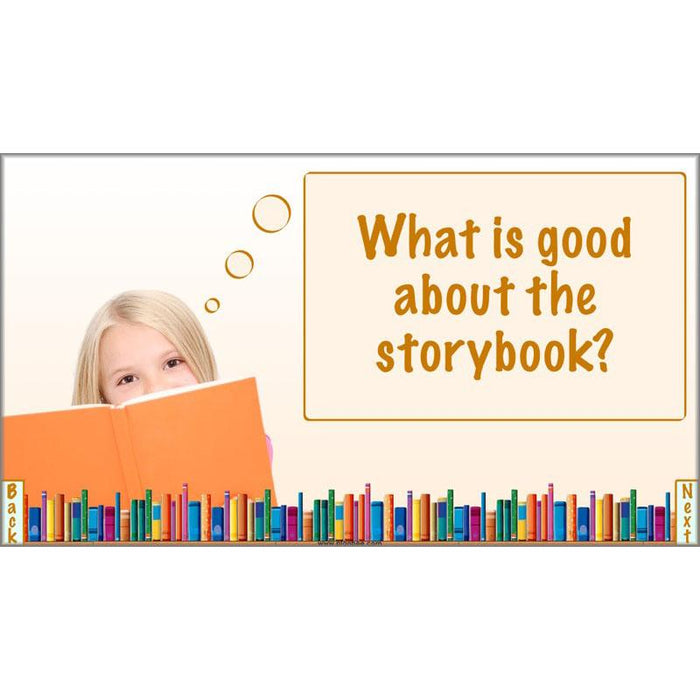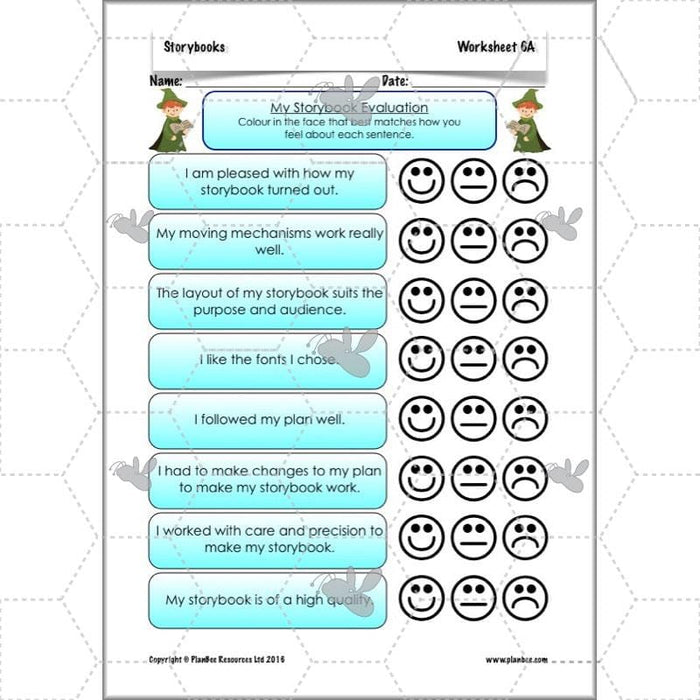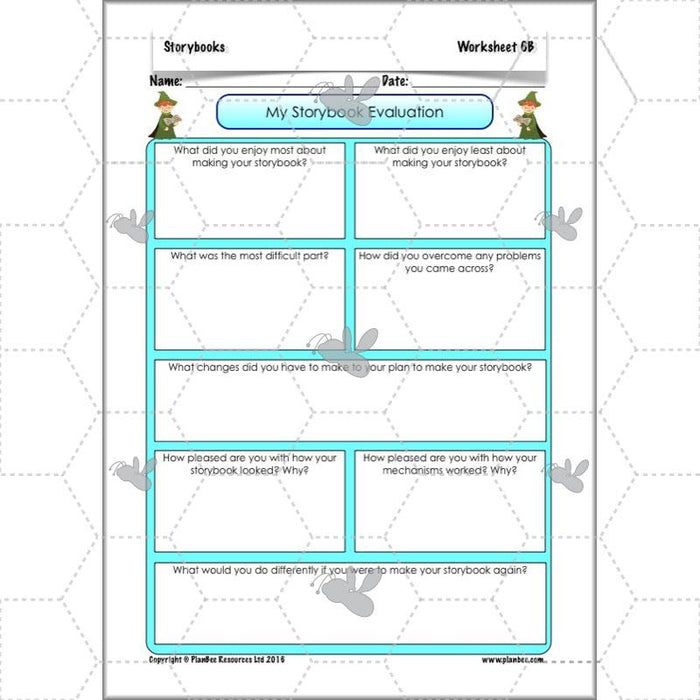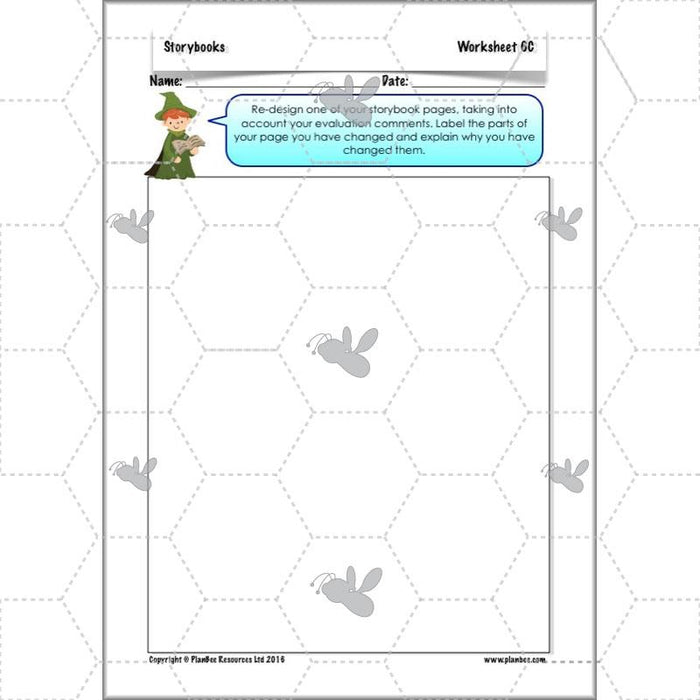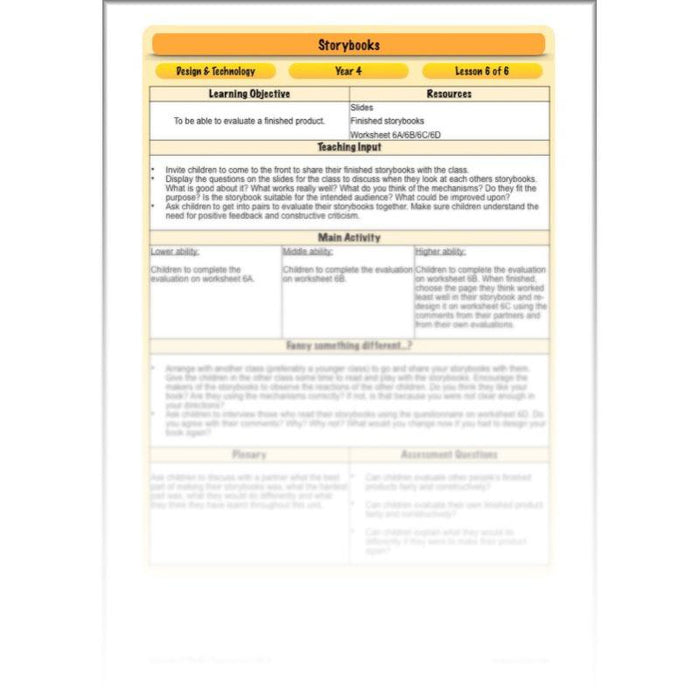#TheCompleteSeries6lessons
Children will have the chance to explore moving parts in a variety of storybooks and learn how to recreate some of these moving parts using a variety of tools and techniques before investigating different types of fonts and graphics. And finally, putting their new-found skills to the test, your class will design, create and evaluate their very own moving storybooks.
This DT 'Storybooks' series of lessons in six parts contains everything you need to teach this Year 4 module, including lesson plans, slides, activity ideas, differentiated worksheets and much more.
#Lesson1LinksandLevers
In this first lesson, your class have the opportunity to investigate different types of moving mechanisms in storybooks and think about how they were made.
What's included:
- Lesson plan
- Slides
- Activity ideas
- Differentiated worksheets
#Lesson2MakingMechanisms
The step-by-step photos on the slides in this lesson provide a helpful starting point for trying out some different techniques for making moving mechanisms including pop-ups. Your class will have the chance to try some of these different methods and start gathering ideas for their own moving storybooks.
What's included:
- Lesson plan
- Slides
- Activity ideas
- Worksheet
#Lesson3LookingGood
This lesson focuses on different fonts and graphic techniques that could be used when the children come to create their own storybooks and provides plenty of opportunities for your class to practise creating fun fonts and images.
What's included:
- Lesson plan
- Slides
- Activity ideas
- Font sheets
#Lesson4PlottingandPlanning
This lesson gives your class the chance to consolidate their learning so far and to design and plan their own storybooks with moving mechanisms.
What's included:
- Lesson plan
- Slides
- Activity ideas
- Worksheet
#Lesson5BringingtheStorytoLife
This practical and hands-on lesson allows your class to put their skills to the test as they create their own storybooks using moving mechanisms and a variety of fonts and graphic techniques.
Please note that, due to the practical nature of this lesson, worksheets are not necessary and, therefore – not included. Children may refer to completed worksheets from previous lessons.
What's included:
- Lesson plan
- Slides
- Activity ideas
#Lesson6TheEnd
With a variety of evaluation activities and worksheets, this lesson provides everything you need for your class to reflect on the designing and making process and to evaluate their finished moving storybooks.
What's included:
- Lesson plan
- Slides
- Activity ideas
- Differentiated worksheets
Free Overview (Medium-Term Plan)
Download a free overview to support your teaching of this scheme of work.
Free Assessment Grid
Download a free, editable assessment grid to support your teaching of this scheme of work.
Curriculum Objectives covered
- KS2 - use research and develop design criteria to inform the design of innovative, functional, appealing products that are fit for purpose, aimed at particular individuals or groups
- KS2 - generate, develop, model and communicate their ideas through discussion, annotated sketches, cross-sectional and exploded diagrams, prototypes, pattern pieces and computer-aided design
- KS2 - select from and use a wider range of tools and equipment to perform practical tasks [for example, cutting, shaping, joining and finishing], accurately
- KS2 - select from and use a wider range of materials and components, including construction materials, textiles and ingredients, according to their functional properties and aesthetic qualities
- KS2 - investigate and analyse a range of existing products
- KS2 - evaluate their ideas and products against their own design criteria and consider the views of others to improve their work
- KS2 - understand and use mechanical systems in their products [for example, gears, pulleys, cams, levers and linkages]
